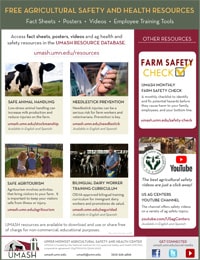
A pdf list of fact sheets, videos and other agricultural health and safety resources developed by UMASH, research and pilot projects, and UMASH partner organizations. OPEN PDF

Petting zoos and fairs fact sheet developed by the Minnesota Department of Health. – Are petting zoos and fairs safe? – What are zoonotic diseases? – What are some examples of germs that cause diarrheal zoonotic diseases? – Is it common to find these types of germs at a petting zoo or fair? – How do people get sick from …
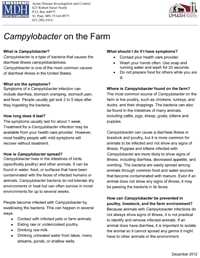
Campylobacter fact sheet developed by the Minnesota Department of Health. – What is Campylobacter? – What are the symptoms? – How long does it last? – How is Campylobacter spread? – What should I do if I have symptoms? – Where is Campylobacter found on the farm? – How can Campylobacter be prevented in poultry, …
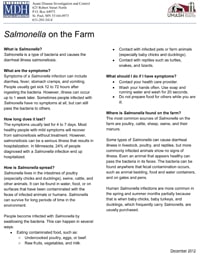
Salmonella fact sheet developed by the Minnesota Department of Health. – What is Salmonella? – What are the symptoms? – How long does it last? – How is Salmonella spread? – What should I do if I have symptoms? – Where is Salmonella found on the farm? – How can Salmonella be prevented in livestock, poultry, …
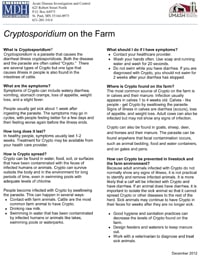
Cryptosporidium fact sheet developed by the Minnesota Department of Health. – What is Cryptosporidium? – What are the symptoms? – How is Crypto spread? – What should I do if I have symptoms? – Where is Crypto found on the farm? – How can Crypto be prevented in livestock and the farm environment? – How can I prevent the spread of Crypto …
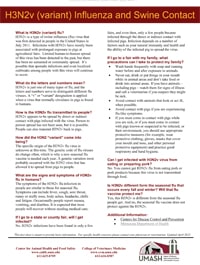
H3N2v (variant) Influenza and Swine Contact fact sheet developed by UMASH and the Center for Animal Health and Food Safety (CAHFS) at the University of Minnesota. – What is H3N2v (variant) flu? – How is the H3N2v flu transmitted to people? – What precautions can I take to protect my family? – What are the signs and symptoms of H3N2v flu in …

Rabies fact sheet developed by the Minnesota Department of Health. – What is rabies? – Which animals carry rabies in Minnesota? – What should I do if one of my animals is bitten by a skunk or other wild animal? – What should I do if someone is bitten by a wild or domestic animal? – The special case of bats – How can …
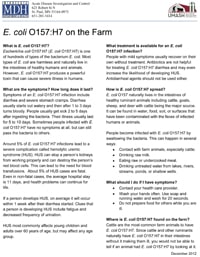
E. coli O157:H7 fact sheet developed by the Minnesota Department of Health. – What is E. coli O157:H7? – What are the symptoms? How long does it last? – What treatment is available for an E. coli O157:H7 infection? – How is E. coli O157:H7 spread? – Where is E. coli O157:H7 found on the farm? – How can E. coli O157:H7 …
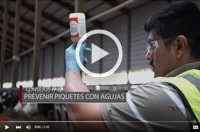
Poco más del 80% de los trabajadores en ranchos y granjas se pican accidentalmente con agujas. Esto incluye a los granjeros y a los trabajadores en las lecherías. En este video, el Centro de Seguridad y Salud Agrícola en el Alto Centro (Upper Midwest Agricultural Safety and Health) le habla acerca de: • las lesiones más comunes asociadas con piquetes …
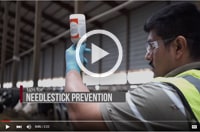
Over 80% of farm workers have accidentally stuck themselves with a needle. This includes farmers and employees who work on dairy farms. In this video, the Upper Midwest Agricultural Safety and Health Center discusses: • most common injuries associated with needlesticks • guidelines for correct use • products or biologics of most concern • proper …










